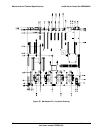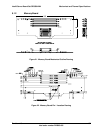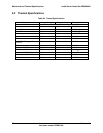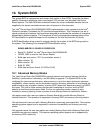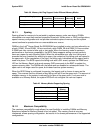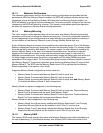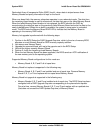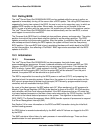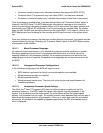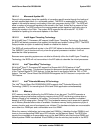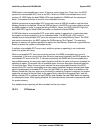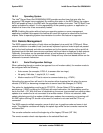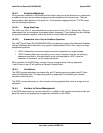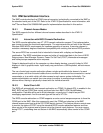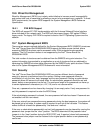
System BIOS Intel® Server Board Set SE8500HW4
Revision 1.0
Intel order number D22893-001
74
Processor installed (status only, indicates processor has passed the BIOS POST).
Processor failed. The processor may have failed FRB-3, and has been disabled.
Processor not installed (status only, indicates the processor socket has no processor).
Once a processor is marked failed, it remains marked failed until “Processor Retest” option is
chosen in the BIOS Setup. The BIOS displays an informational message on the console to
remind the user about a previous processor failure until all processors have been retested and
successfully pass FRB an AP initialization. If all the processors are marked failed, the system
does not alter the BSP and attempts to boot from the original BSP. In the case of a failure, the
BIOS displays and error message on the console and the logs the errors in the system event
log.
If the user replaces a processor that has been marked failed by the system, the system must be
informed about this change. Selecting the “Processor Retest” option in the BIOS Setup causes
all processors to be retested.
10.3.1.1 Mixed Processor Steppings
For optimum system performance, only identical processors should be installed in a system.
Processor steppings can be mixed in a system provided that there is no more than a one
stepping difference in all processors installed. If the installed processors are more than one
stepping apart an error is reported. Acceptable mixed steppings are not reported as errors by
the BIOS.
10.3.1.2 Unsupported Processor Configurations
In the following configurations the BIOS will report an error:
BIOS detects a processor for which a microcode update is not available
Mixed processor models are installed
Mixed processor families
Mixed processor cache sizes. The size of all cache levels must match between all
installed processors.
10.3.1.3 Jumperless Processor Speed Settings
The 64-bit Intel
®
Xeon™ Processors MP does not utilize jumpers or switches to set the
processor frequency. The BIOS reads the highest ratio register from all processors in the
system. If all processors are the same speed, the actual speed will be the highest speed
probed. If all processors do not match, the highest common value between high and low ratio is
determined and programmed for all processors. If there is no value that works for all installed
processors, all processors not capable of speeds supported by the BSP are disabled and an
error is displayed.



